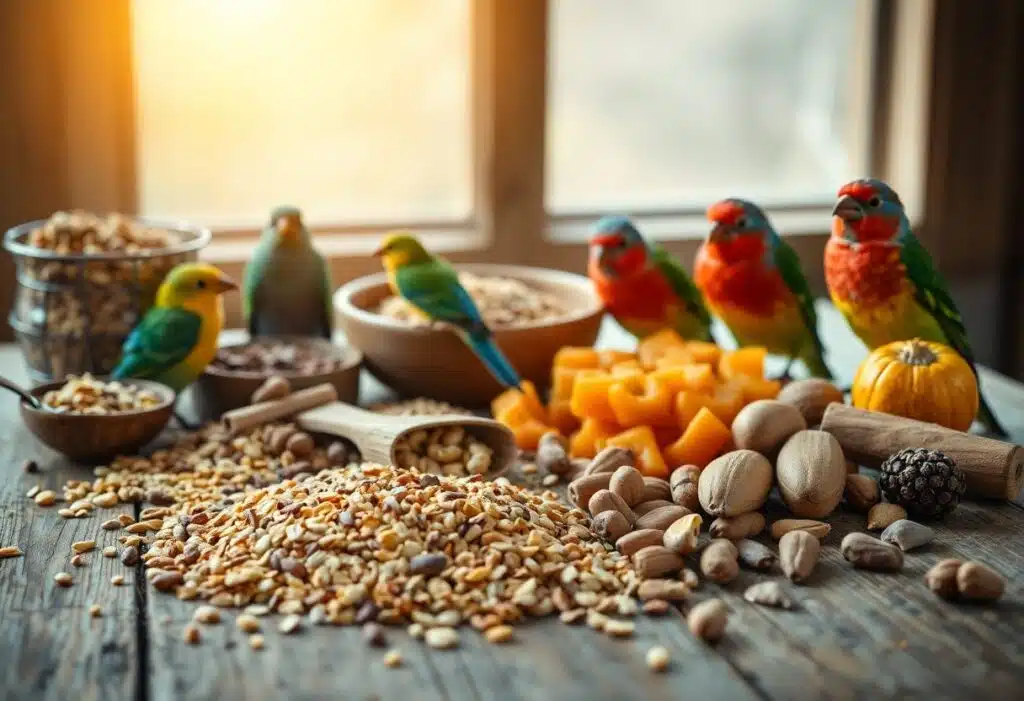How To Make Bird Food At Home
Are you ready to attract some feathered friends to your backyard? Making homemade bird food is a fun and easy way to do just that! With just a few simple ingredients, you can create a delicious and nutritious treat for your local birds. Plus, it’s a great way to get the whole family involved in bird watching and appreciation. In this article, we’ll show you how to make homemade bird food and even provide some tips on how to make your own bird feeders. So, let’s get started! 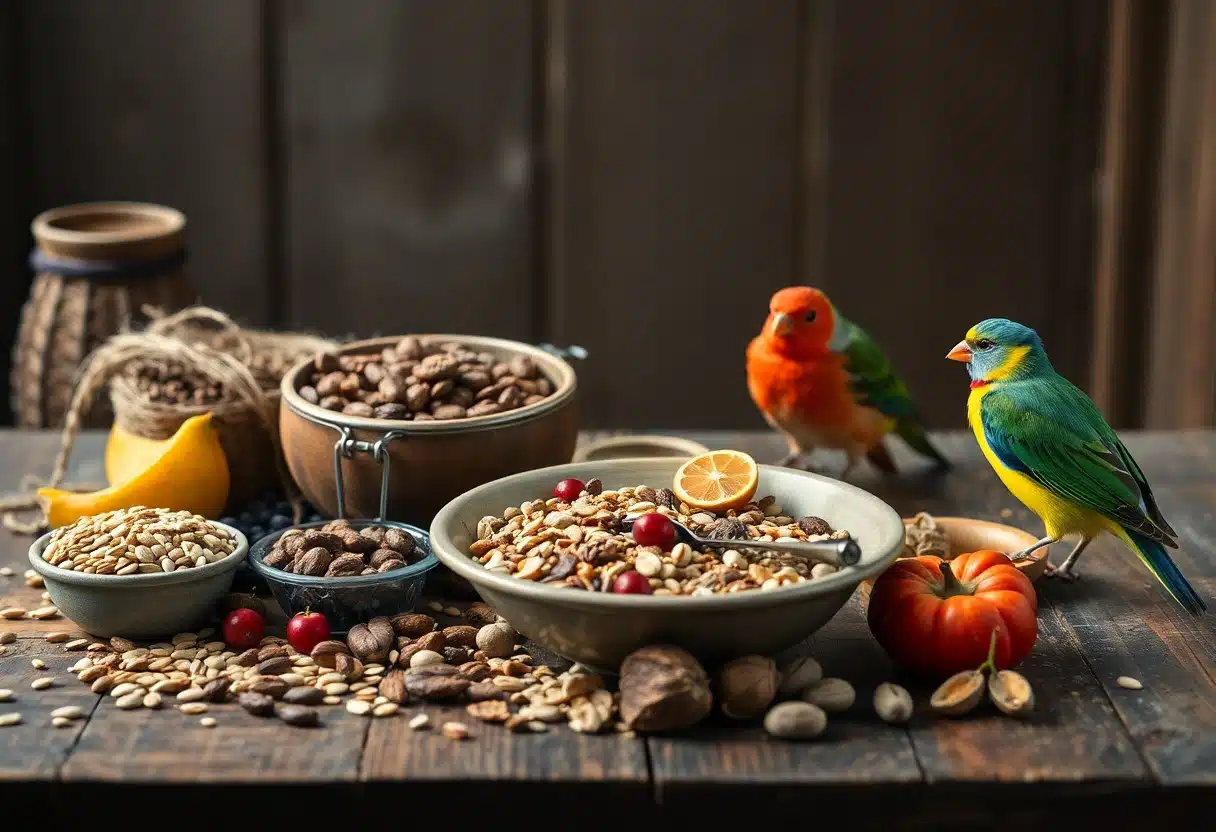
Key Takeaways:
- Customize your bird food recipe: Use a combination of seeds, grains, fruits, and fats to create a bird-friendly mix that attracts the types of birds you want to see in your backyard.
- Make it easy and affordable: You likely already have most of the ingredients you need in your kitchen, and making your own bird food can be cheaper than buying it at the store.
- Get creative with your bird feeder: Try making a simple bird feeder using a pinecone, plate, or toast, and get the kids involved in the fun!
“Making your own homemade bird food is a great way to attract birds to your yard and provide them with a source of energy during the winter months.”
How to Make Homemade Bird Food
To make your own homemade bird seed, simply combine the bird-friendly items that you have on hand. Use mostly seeds and grains, with moderate amounts of fruits and fats. You might even find that this ends up being free bird seed if you have stale ingredients or scraps that you wouldn’t consume anyway!
Understanding What Birds Like to Eat
An necessary part of making homemade bird food is understanding what birds like to eat. Most wild birds like to eat seeds, grains, fruits, and fat. Many also enjoy bugs, but you probably already have those in your yard to feed birds.
Creating a Customized Bird Seed Mix
Birds have different tastes, so creating a customized bird seed mix can help attract the types of birds you want to see in your backyard. Experiment with different ingredients to find the perfect blend for your feathered friends. Homemade bird seed mixes can be tailored to attract specific types of birds. For example, if you want to attract cardinals, use more sunflower seeds and safflower seeds. If you want to attract finches, use more nyjer seeds and thistle seeds.
Basic Bird Seed Recipe
Basic bird seed recipes are a great starting point for making homemade bird food. Here’s a simple recipe to get you started: Basic Bird Seed Recipe
- 1 cup of whole wheat flower
- 1 cup corn meal
- 1 cup of sunflower seeds
- Seeds from one watermelon
Understanding the ratio of fat to dry ingredients is important when making homemade bird food. A good rule of thumb is to use one part fat to two parts dry ingredients. Remember to store your homemade bird seed mix in an airtight container to keep it fresh for feeding the birds! 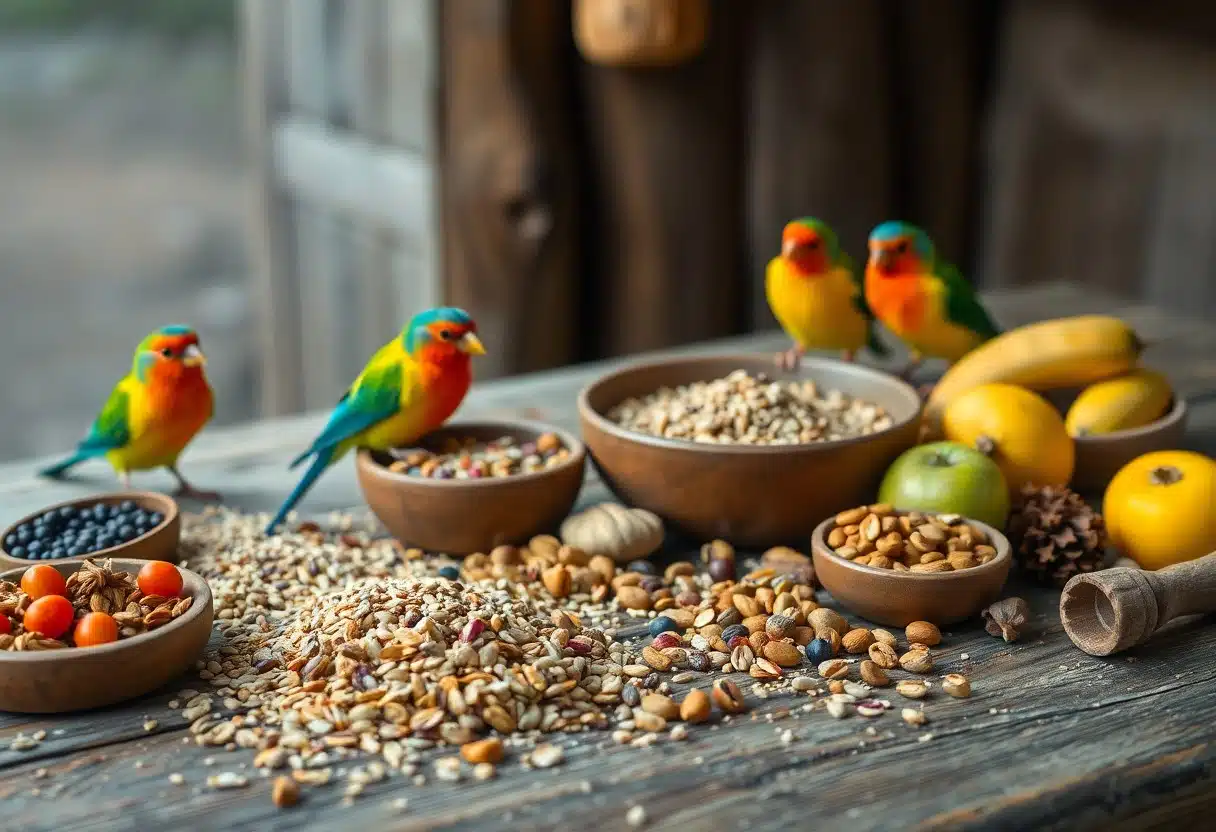
Tips for Making the Perfect Bird Seed Mix
While creating your own bird seed mix may seem daunting, it’s actually quite simple. By following a few key tips, you can create a mix that will attract a variety of birds to your backyard. First, use a combination of seeds, grains, fruits, and fats to provide a well-rounded diet for your feathered friends. Next, experiment with different ingredients to find the perfect blend for your local bird population. Finally, consider the types of birds you want to attract and tailor your mix accordingly. Recognizing the importance of using fresh, high-quality ingredients will also ensure that your wild bird food mix is effective and safe for the birds.
Using Stale Ingredients and Scraps
Seed leftovers can be a great way to get started with making your own bird seed mix. Consider using stale bread, crushed crackers, or dried fruits that are no longer suitable for human consumption. These ingredients can be just as nutritious for birds and will help reduce waste in your household.
Experimenting with Different Ingredients
Any bird enthusiast knows that different species have different preferences when it comes to food. Experimenting with different ingredients can help you create a mix that will attract a variety of birds to your backyard. Try adding nuts, seeds, or fruits to your mix to see what works best. Ingredients like sunflower seeds, peanuts, and dried fruits are all great options to consider. You can also try using different types of grains, such as oats or cornmeal, to add variety to your mix. Don’t be afraid to get creative and try out new ingredients to see what works best for your backyard birds.
Considering the Types of Birds You Want to Attract
When creating your bird seed mix, it’s necessary to consider the types of birds you want to attract. Different species have different dietary needs, so it’s crucial to tailor your mix accordingly. For example, cardinals and finches prefer seeds and nuts, while woodpeckers and nuthatches prefer suet and peanut butter. By understanding the needs of your local bird population, you can create a mix that will attract a variety of species to your backyard.
| Bird Species | Preferred Food Sources |
| Cardinals and Finches are popular visitors, along with chickadees. | Seeds and Nuts |
| Woodpeckers and Nuthatches | Suet and Peanut Butter |
| Blue Jays and Sparrows | Sunflower Seeds and Cracked Corn |
| Mourning Doves and Blackbirds | Millet and Safflower Seeds |
Tips: When creating your bird seed mix, be sure to consider the types of birds you want to attract. By understanding their dietary needs, you can create a mix that will attract a variety of species to your backyard. This will ensure that your bird feeder is always bustling with activity.
Factors to Consider When Making Bird Food
Keep in mind that making bird food at home requires some thought and consideration to ensure you’re providing the best possible nutrition for your feathered friends. Here are some key factors to think about:
- Seed quality and freshness are crucial for homemade bird food recipes.: Using stale or low-quality seeds can be detrimental to the health of the birds.
- Avoiding fillers and by-products: Make sure to exclude ingredients that offer no nutritional value to the birds.
- Customizing for your local bird population: Different species have different dietary needs, so it’s important to tailor your bird food recipe accordingly.
The right combination of ingredients can make all the difference in attracting a diverse range of bird species to your backyard.
Seed Quality and Freshness
For optimal nutrition, it’s important to use fresh and high-quality seeds in your bird food recipe. Old or stale seeds can be devoid of nutrients, which can negatively impact the health of the birds.
Avoiding Fillers and By-Products
Assuming you want to provide the best possible nutrition for your backyard birds, it’s crucial to avoid using fillers and by-products in your bird food recipe. These ingredients offer no nutritional value and can even be harmful to the birds. It’s also important to note that many commercial bird foods contain fillers and by-products, which is why making your own bird food at home can be a better option. By choosing the ingredients yourself, you can ensure that your bird food is free from unwanted additives.
Customizing for Your Local Bird Population
Food preferences can vary greatly between bird species, so it’s important to customize your bird food recipe according to the types of birds you want to attract to your backyard. For example, finches love nyjer seed, while blue jays prefer peanuts. Factors such as the time of year, climate, and regional bird species should also influence your bird food recipe. By taking these factors into account, you can create a bird food that meets the specific needs of your local bird population.
How to Make Simple Homemade Bird Feeders
Your backyard bird watching experience can be even more enjoyable with homemade bird feeders. Making your own bird feeders is a fun and easy DIY project that can be customized to attract different types of birds.
Pine Cone Bird Feeder
If you’re looking for a simple and fun DIY project, try making a pine cone bird feeder. Spread peanut butter on a pinecone and roll it in bird seed mix. Use string to hang it up outside. This is an easy and fun activity for kids, too.
Plate Bird Feeder
To make a plate bird feeder, use macrame style tying or carefully drill small holes in a glass plate to hang it up outside. Just keep the bird feeder filled with birdseed. Simple and easy to make, a plate bird feeder is a great way to offer your homemade bird food to your backyard birds. You can customize the design and size of your feeder to fit your needs.
Toast Bird Feeder
On a cold winter morning, a toast bird feeder can be a great treat for your backyard birds. Toast bread until it is very dry and spread it with peanut butter on both sides. Apply peanut butter and then dip in birdseed so that the entire surface is covered. Carefully punch a hole in the bread with a small utensil and hang it up outside with string. The birds will devour the whole thing, especially the chickadees! A toast bird feeder is a fun and easy DIY project that can be customized with different types of birdseed and spreads. 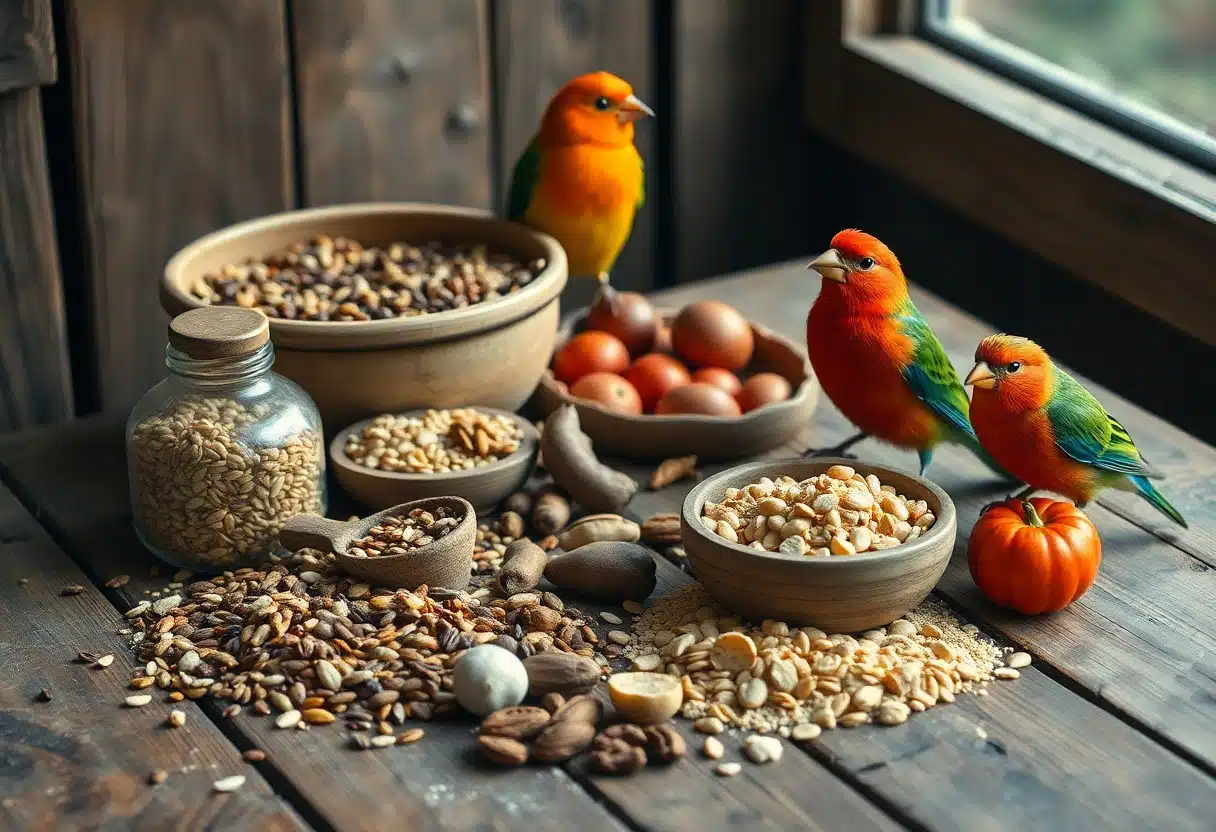
Benefits of Attracting Birds to Your Yard
All bird enthusiasts know that attracting birds to your yard can bring numerous benefits. From educational experiences to relaxation and stress relief, attracting birds can enrich your life in many ways.
Educational Value of Birdwatching
There’s more to birdwatching than just observing birds; it’s an educational experience that can teach you about different species, their habits, and their habitats. You can learn how to identify birds, their migration patterns, and their unique characteristics. Check out this article on How to Make Homemade Suet for Birds: Easy Natural Craft Using Lard to get started.
Relaxation and Stress Relief
Yard bird watching is a great way to unwind and relax. The soothing sounds of birds chirping and singing can calm your mind and reduce stress. Plus, watching birds can be a therapeutic experience that can help you connect with nature. Plus, studies have shown that listening to bird songs can lower blood pressure, heart rate, and stress levels while you enjoy your wild backyard. So, grab a pair of binoculars, sit back, and enjoy the symphony of bird songs in your backyard!
Natural Pest Control and Weed Management
Your backyard birds can be your best allies in controlling pests and weeds. Many bird species feed on insects, slugs, and snails that can harm your garden. They can also help control weed growth by eating seeds and preventing them from germinating. Natural pest control methods are not only effective but also environmentally friendly. By attracting birds to your yard, you can reduce your reliance on chemical pesticides and create a healthier ecosystem.
Wildlife Conservation
Now, more than ever, it’s vital to create a safe haven for wildlife in your backyard. By attracting birds, you’re contributing to the conservation of local species and preserving biodiversity in your wild backyard. This is especially important in urban areas where natural habitats are scarce. This simple act of creating a bird-friendly yard can have a significant impact on the environment. So, go ahead, plant some bird-friendly plants, install a birdbath, and watch your yard become a haven for wildlife!
Backyard Bird Items You Might Like
Despite the joy of making your own homemade bird food, you might still want to consider investing in some backyard bird items to enhance your bird-watching experience.
Bird Feeders and Accessories
Certainly, having the right bird feeder can make a big difference in attracting the types of birds you want to your yard. From squirrel-proof window bird feeders to gazebo-style bird feeders, there are many options available to suit your needs and preferences.
Bird Identification Books and Resources
Resources such as field guides and bird identification books can be incredibly helpful in learning more about the birds that visit your yard and how to keep birds healthy. These resources can provide valuable information on bird species, habits, and habitats, helping you to better understand and appreciate your feathered friends. Backyard bird watching becomes even more enjoyable when you can identify the different species that visit your yard. With a bird identification book, you can learn more about the birds’ habits, habitats, and characteristics, making your bird-watching experience even more rewarding. “Happy birdwatching! I hope this guide has helped you learn how to make bird seed. I’d love to hear any other ideas you have for a diy bird feeder.” 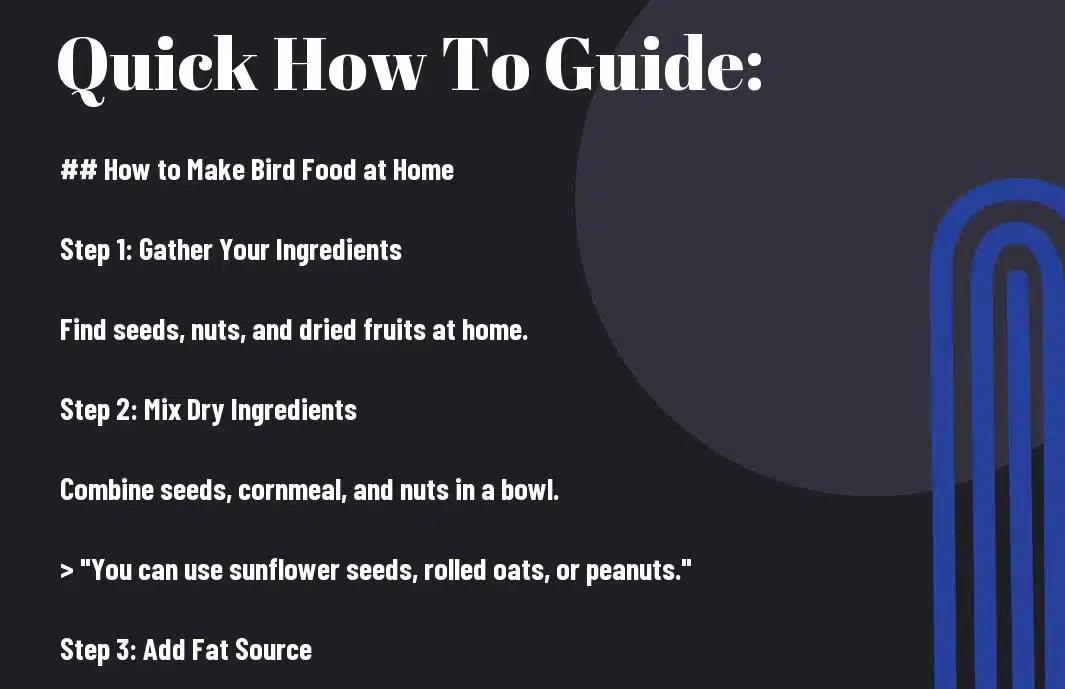
Conclusion
As a reminder, making homemade bird food is a fun and easy way to attract birds to your yard. With just a few simple ingredients, you can create a customized bird seed mix that will delight your feathered friends. By following the recipes and tips outlined in this article, you can create a bird-friendly haven in your backyard. So, get creative, make your own bird food, and enjoy the beauty and benefits of attracting birds to your yard! “Making homemade bird food is a great way to provide a source of energy for birds, especially during the winter months.”
FAQ
Q: What are the basic ingredients I need to make homemade bird food?
A: You’ll need seeds, grains, fruits, and fats. Some examples include wheat or flour, cornmeal, flax seeds, sunflower seeds, raisins, and peanuts.
Q: How do I make a simple homemade bird feeder?
A: You can make a pine cone bird feeder by spreading peanut butter on a pinecone and rolling it in bird seed mix, then hanging it up outside. You can also use a plate or toast with peanut butter and birdseed.
Q: Why should I attract birds to my yard?
A: Attracting birds can be educational, relaxing, and beneficial for your garden. They eat pests, help with weed control, and contribute to wildlife conservation. Plus, it’s a great way to enjoy birdwatching!
As a bird enthusiast with a passion for sharing the wonders of our feathered friends. As a writer and nature lover, I'm thrilled to connect with fellow bird buffs and inspire others to take flight into the fascinating world of birds. Let's wing it together!

